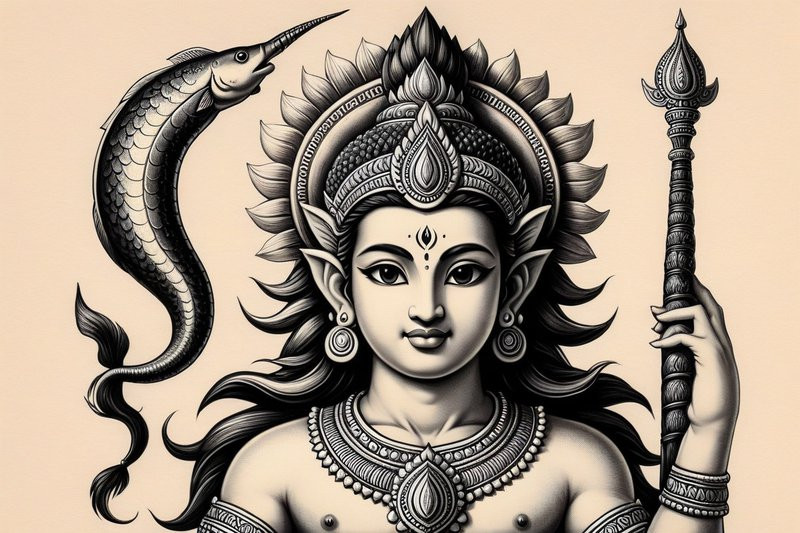Lord Vishnu is one of the principal deities of Hinduism, forming the holy trinity alongside Brahma, the creator, and Shiva, the destroyer. His role as the preserver is crucial in maintaining the balance of the cosmos. Vishnu is often depicted as a serene figure, resting on the cosmic serpent Ananta, floating on the primordial waters. This imagery symbolizes his eternal nature and his role in sustaining the universe.

The Ten Avatars of Lord Vishnu
Vishnu is renowned for his ten avatars, known as the Dashavatara, each of which was incarnated to restore cosmic order. These avatars are:
- Matsya: The fish that saved the sacred texts from a great deluge.
- Kurma: The tortoise that supported Mount Mandara during the churning of the ocean.
- Varaha: The boar that rescued the Earth from the demon Hiranyaksha.
- Narasimha: The half-man, half-lion who vanquished the tyrant Hiranyakashipu.
- Vamana: The dwarf who subdued the demon king Bali.
- Parashurama: The warrior with an axe who rid the world of corrupt rulers.
- Rama: The prince of Ayodhya, hero of the Ramayana, and symbol of dharma.
- Krishna: The divine statesman and charioteer in the Mahabharata, known for his teachings in the Bhagavad Gita.
- Buddha: The enlightened one who taught compassion and non-violence.
- Kalki: The future warrior who will end the current age of darkness and corruption.
Vishnu's Symbolism and Attributes
Vishnu is often depicted with four arms, each holding a symbolic object: the conch (shankha), the discus (chakra), the mace (gada), and the lotus (padma). These items represent various aspects of his divine nature, such as the sound of creation, the mind, strength, and purity. His blue skin signifies his infinite nature, akin to the vastness of the sky and the ocean.
Vishnu in Daily Life and Worship
Vishnu's influence extends beyond mythology into the daily lives of his devotees. Temples dedicated to Vishnu, such as the famous Tirupati Balaji and the Jagannath Temple, are centers of pilgrimage and devotion. Rituals and festivals like Vaikuntha Ekadashi and Janmashtami celebrate his divine presence and teachings.
Inspiration from Vishnu's Stories
The stories of Vishnu's avatars are not just tales of divine intervention but are rich with moral and ethical lessons. They inspire individuals to uphold righteousness, compassion, and humility in their lives. Vishnu's narratives encourage us to find balance and harmony in a world often fraught with challenges.

Conclusion
Vishnu's many faces and forms offer a profound insight into the spiritual and cultural fabric of Hinduism. His stories and teachings continue to inspire millions, serving as a beacon of hope and guidance. As we explore the depths of Vishnu's mythology, we are reminded of the timeless values that transcend the ages, connecting us to a rich and vibrant heritage.